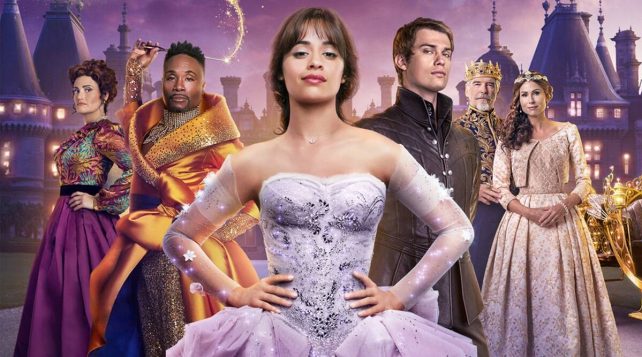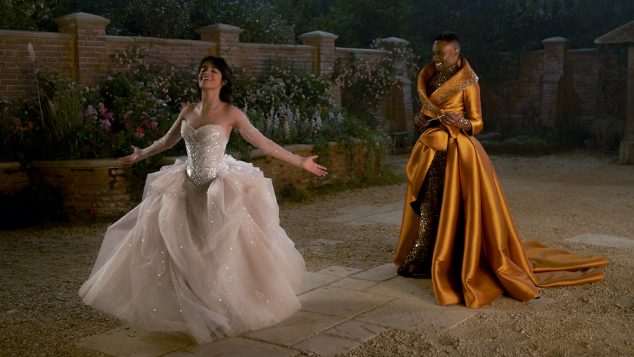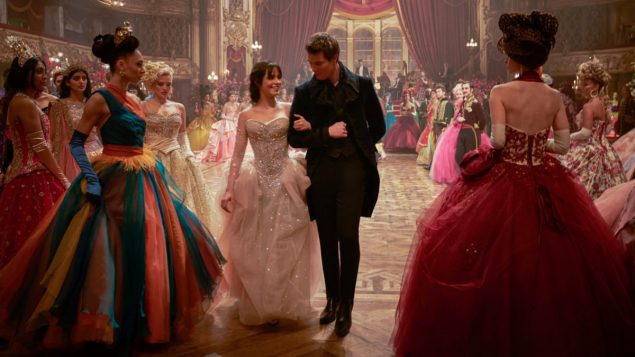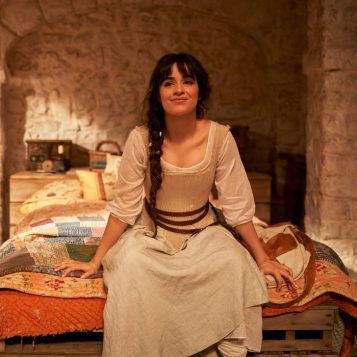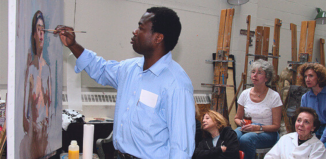Movie Review: Amazon’s ‘Cinderella’ is a fresh take on a classic fairy tale
By Jeffrey Sanzel
Cinderella has long been a cinematic staple, with various versions on the large and small screens. The story traces its roots to both Charles Perrault (1697) and the Brothers Grimm (1812), though the former gave us the glass slipper.
America’s sweetheart, Mary Pickford, appeared in the earliest known adaptation, the 1914 silent film. None is more beloved than the 1950 Disney cartoon, loosely remade as a live-action version in 2015, with a luminous Lily James. The Rodgers and Hammerstein musical has gone through three television incarnations, with Cinderella portrayed by Julie Andrews (1957), Lesley Ann Warren (1965), and Brandy (1997). Add to these the many appearances of the character in modernizations, sequels, spoofs, and revisionist fair.
In addition, Cinderella has appeared in operas, ballets, and stage productions, including the 2013 Broadway production and Andrew Lloyd Webber’s current West End vision, replete with a Goth heroine.
Kay Cannon, best known for the Pitch Perfect series, has written and directed the latest incarnation. The musical follows the basic plot: With the aid of a fairy godmother, an orphaned waif (put-upon by her stepmother and stepsisters) catches the eye of a prince and lives happily ever after.
Utilizing pop hits, Cannon has created a peripatetic world in Candy Land colors and clashing patterns. The opening number, a mashup of Janet Jackson’s “Rhythm Nation” and Desirée Weekes’ “You Gotta Be,” plays like Beauty and the Beast’s “Belle” on speed. It is explosive and joyfully aggressive, setting the tone, more The Greatest Showman and less Disney. (Both pieces share the athletic and often delightful work of choreographer Ashley Warren.) Other numbers include “Somebody to Love,” “Material Girl,” and “Perfect,” all fairly well integrated.
Where this Cinderella departs is in its feminist viewpoint. Cinderella’s greatest desire is to design dresses for her own shop. Forbidden to pursue her dream by her stepmother, she also faces the town’s prohibition on women owning businesses. Cinderella’s quest is not for a man; it is for independence and a sense of self. Much of this is presented on the nose and succeeds because of a charismatic star.
Singer Camila Cabello holds center as a strong, funny, and intelligent Cinderella in her acting debut. She also composed the movie’s (oft-repeated) “Million to One,” a predictable if tuneful number. Nicholas Galitzine’s Prince Robert has almost as much screentime. In line to be king, Galitzine alternates between traditional Crown Prince and frat boy. He is “charming,” if a bit bland, due to his ambivalence to his eventual succession. Unfortunately, his passivity makes him less engaging and no match for Cabello’s feisty, forward-looking Cinderella.
The rest of the all-star cast mostly triumphs over uneven material. The marvelous Idina Menzel, who has the film’s strongest voice, struggles with finding Cinderella’s stepmother Vivian’s center. She ranges from comic villainy to severely cruel, with peaking glimpses of humanity. Instead of creating dimension, the character feels unfinished. Maddie Ballio and Charlotte Spencer are hilarious and a pure delight as stepsisters Malvolia and Narissa. They deserved more screen time and a number to themselves as they become sidelined.
The royal family features Pierce Brosnan as a king who is more bluff than gruff, Minnie Driver as his better half, and Tallulah Greive as the mildly scheming princess who aspires to rule. There is so much going on and yet very little result. Like with the stepsisters, Greive warranted a bigger presence. All three performances are good if incomplete.
Billy Porter is the Fabulous Godmother, and Fabulous he is. Porter should appear in every new movie, if not by his choice, then by Act of Congress. He brings hilarity, sensitivity, and depth to his five minutes of screen time.
The ensemble is composed of wonderful dancers who land the handful of lines peppered throughout the larger scenes. Cannon has corralled the company nicely — though she failed to mine a very funny piece of business with a royal choir.
Ultimately, the entire movie is entertaining if unfulfilled potential, with the scales tipping back and forth. Five-note range generic pop songs follow clever lines. Spectacular dance numbers spell stretches of declarative dialogue telling us the ideas of equality rather than showing them. Cannon struggles to find a consistent writing style. Some moments swipe at a period quality. Other scenes aim for a tough, clear reality (a particularly awkward exchange between the monarchs that borders on embarrassing). But mostly, the dialogue is contemporary “sass,” which is what serves its cast best. It aims for “poppin’” (as one character states) but often tries a bit too hard.
While this Cinderella will never achieve status as even a semi-classic, it reflects its time. And, with a message of self-actualization, the solid cast is up to the telling. Like its prince, this Cinderella might not be Mr. Right — but it’s Mr. Right Now.
Rated PG, Cinderella is playing in select theaters and on Amazon Prime.

